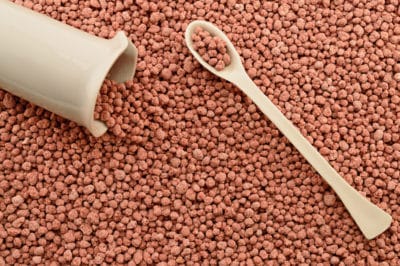Fertilize Asparagus Before and at Planting
Improve the fertility of the soil for your asparagus bed a year in advance, if possible. Grow a soil-building cover crop such as vetch, bell beans, and oat grass and turn the residue into the soil at flowering the spring before planting your crop. This provides the soil with organic matter and nutrients, including nitrogen.
Before planting, do a soil nutrient test with a test kit purchased from a nursery or online. University agricultural extension offices in many places also provide soil testing services to the public. A soil test gives you information for determining how much fertilizer to add to the soil at planting. Follow these recommendations for amending your soil, and adjust the soil pH to 6.5 to 7.
At planting, dig a trench approximately 6 to 8 inches deep (15 to 20cm) deep and add a band of high phosphorus and potassium fertilizer to the bottom, digging it into the soil 6 to 8 inches (15 to 20cm) further at the bottom of the trench. Place a mound of soil over this and set crowns on the mound and cover them with soil, filling the trench.
Fertilizing Asparagus After Planting
In the early spring before shoots have emerged, apply a granular or powdered fertilizer with approximately 10-10-10 percentages of nitrogen, phosphorus, and potassium.
You can mix a balanced organic fertilizer for asparagus and other crops by mixing equal parts:
- Blood meal – 13 percent nitrogen
- Bone meal – 4 percent nitrogen and 12 percent phosphorous
- Kelp powder or greensand – rich in potassium and trace minerals
Apply the fertilizer mix to the soil at a rate of approximately 1 to 1.5 pounds (450 to 680 grams) per 100 square feet (9.3 square meters) of soil. Fertilize asparagus in early spring for the first three years, then switch to late June after harvest once you have started picking the shoots.
Controlling Weeds
Weeds compete with asparagus by using nutrients which would otherwise be used by the growing crop. Because asparagus beds are permanent installations and are not tilled or cultivated deeply each year, it is important to keep weeds, especially perennial grasses like quackgrass, from becoming established in the asparagus bed.
Before you establish the bed, you can put cardboard or black plastic over the area and leave it for several months to smother deep-rooted weeds. After planting, mulch the bed in winter and pull or cut weeds in spring and summer when they are small.
